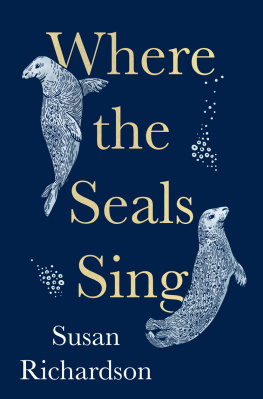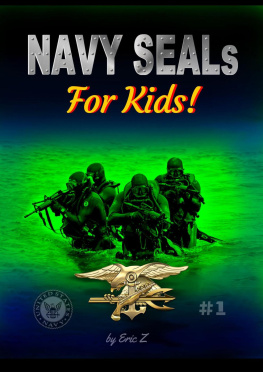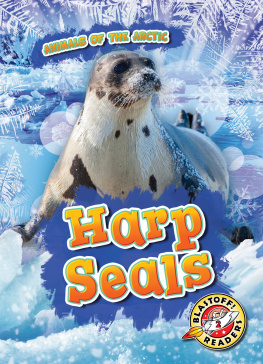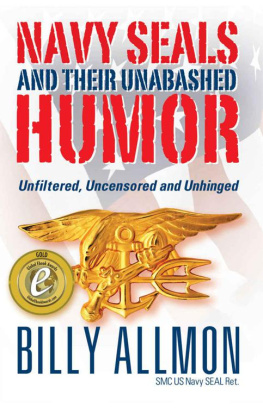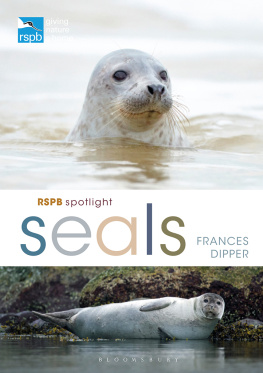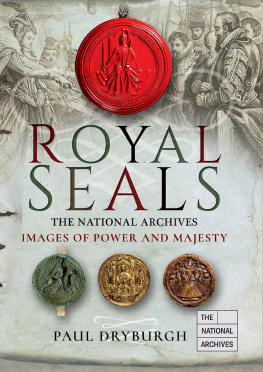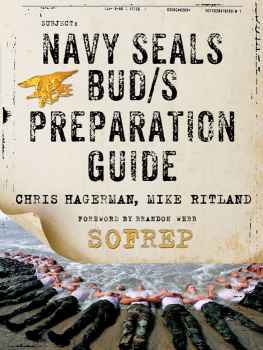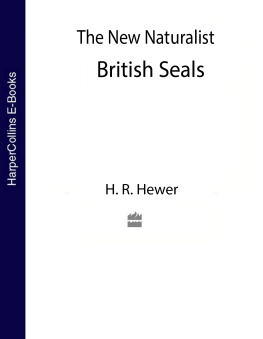At the age of six, when asked the usual question about what she wanted to be when she grew up, Susan Richardson replied, I want to travel round the world and write about animals. She is the author of four collections of poetry, the most recent of which, Words the Turtle Taught Me, themed around endangered ocean species, emerged from her residency with the Marine Conservation Society and was shortlisted for the Ted Hughes Award. In addition to her ongoing writing residency with the British Animal Studies Network, facilitated by the University of Strathclyde, she has shared her work on BBC Two and Radio 3, and enjoyed a four-year stint as one of the poet-performers on Radio 4s Saturday Live.
There are fewer grey seals in the world than endangered African elephants, but the British Isles host almost half of this global population. Every year these charismatic animals, with their expressive eyes and whiskers more sensitive than our fingertips, haul out on our shores to breed and raise their pups.
Susan Richardson has always been entranced by seals; they seem to have surfaced at key junctions throughout her life, comforting her as an anxious child, bringing joy as she began to spread her wings as a writer and helping her to find her way after the loss of her mother. Now she sets out to trace the rhythm of their lives, travelling the coasts clockwise from Cornwall to Norfolk, in line with the autumn pupping season. Along the way she explores the myths surrounding seals, from their shapeshifting selkie skins to the claims that they decimate fish populations, and she discovers that the greatest dangers they face come from co-existing with us.
Brimming with vivid descriptions of the natural world, Where the Seals Sing is a lyrical tale of memory, rescue and rehabilitation. While loss, both personal and ecological, is a recurring theme, the humanseal connection that flows through the story is stirring and uplifting.
Australia
HarperCollins Publishers Australia Pty. Ltd.
Level 13, 201 Elizabeth Street
Sydney, NSW 2000, Australia
www.harpercollins.com.au
Canada
HarperCollins Canada
Bay Adelaide Centre, East Tower
22 Adelaide Street West, 41st Floor
Toronto, Ontario M5H 4E3, Canada
www.harpercollins.ca
India
HarperCollins India
A 75, Sector 57
Noida, Uttar Pradesh 201 301, India
www.harpercollins.co.in
New Zealand
HarperCollins Publishers New Zealand
Unit D1, 63 Apollo Drive
Rosedale 0632
Auckland, New Zealand
www.harpercollins.co.nz
United Kingdom
HarperCollins Publishers Ltd.
1 London Bridge Street
London SE1 9GF, UK
www.harpercollins.co.uk
United States
HarperCollins Publishers Inc.
195 Broadway
New York, NY 10007
www.harpercollins.com
From initial idea to published book, Where the Seals Sing has been hugely enriched by the knowledge, insights and thoughtful attention of so many people.
At the start of my round-Britain journey, it was a privilege to learn from stellar seal advocate Sue Sayer, both on the cliffs of West Cornwall and at Seal HQ, and Dan Jarvis at the Cornish Seal Sanctuary was the most helpful of hosts. In West Wales, the passion and commitment of Lisa Morgan and Birgitta Bche were inspiring, while Pauline Bett was an engaging seal-watching companion on her home patch of Cwmtydu and, on a reciprocal visit to Aber Felin, admirably unfazed by the ankle-deep mud. Thanks to Bel Deering for the tour of RSPCA West Hatchs seal rehab facilities and the bonus encounter with the rescued ferrets, and to both David Gregson of the Friends of Hilbre and Dr Lara Howe of Manx Wildlife Trust for the phone chats and seal survey records.
Dr Emily Doolittle offered a fascinating introduction to zoomusicology and I look forward to continuing our conversation on my future trips to Glasgow. Im grateful to Rachel Taylor-Beales, not only for her courageous contribution to this book but also for her subsequent friendship.
Andy Ottaway of the Seal Protection Action Group, Sea Shepherd UKs Rob Read, and hunt sabs Jenny Green and Alfie Moon all generously shared their experiences and expertise as I tackled the issue of sealsfisheries interactions. I much appreciated Lee and Eilidh Watsons warm welcome and revelations about their work as defenders of the seals of the Ythan Estuary. My thanks are also extended to David Steel for offering his unique perspective on two major breeding colonies with wisdom and wit, and to Professor Ailsa Hall who addressed an exhilarating range of issues in the short time that was available during my Sea Mammal Research Unit visit. Dr Kimberley Bennett and Dr Kelly Robinson gave an absorbing and accessible overview of the complexities of the PHATS project and, over a period of several months, Kimberley also graciously responded to all my seal physiology queries: any inaccuracies that exist in the text are wholly my own.
In Englands North East, Sal Bennett furnished me with a wealth of material in the characterful settings of lighthouse and bird hide, while Ben Burville opened my eyes to the wonders of seals underwater lives. Further south, in the midst of Donna Nooks pupping season, Rob Lidstone-Scott and Lizzie Lemon juggled reserve management issues, visitor engagement and my copious questions with aplomb.
From the Norfolk stage of my travels, gratitude is due to Friends of Horsey Seals stalwart, Gemma Walker, as well as to RSPCA East Winchs Alison Charles both for the guided tour and the exceptional levels of compassion shown to the sick and injured seals in her care. Id particularly like to thank Ajay Tegala for allowing me to join the pup count at Blakeney and providing me with the most unforgettable wildlife experience of my seal journey, if not my life.
Many other scientists, animal care workers, rangers, artists, activists and volunteers contributed useful information while I was working on this book and, though they might not explicitly appear in its pages, they undoubtedly helped to shape it. These include John Arnott, Elizabeth Bradfield, Alex Cornelissen, Imogen Di Sapia, Simon Fathers, Sheryl Fink, Amanda James-Hussey, Dr Damian Lidgard, Kate Lock, Debbie MacKenzie, Kim Mercer, Uisdean Murray, Dr Sarah Perry, Brian Sharp, Powell Strong and the Pembrokeshire College Wildlife Observer Wales course team, David Vyse and Dr Sue Wilson.
Its not, of course, only these human animals to whom I must pay tribute but also the more-than-human the hundreds of grey seals in whose presence Ive spent so many cherished hours and days. In the process of unobtrusively watching and listening, Ive learnt so much about their behaviour and biology and Im humbled that they consented to my sharing their shores.
For all the research, travel and fieldwork, this book wouldnt exist were it not for the keen eyes and kind heart of my agent, Charlotte Atyeo, of Greyhound Literary: she believed in it from the start and has never failed to give pitch-perfect encouragement and advice. At William Collins, my editor, Myles Archibald, supplied invaluable thematic and structural guidance, while Sally Partington patient, creative and wise made the copyediting process a real delight. I also feel fortunate that Hazel Eriksson, along with cover designer Ola Galewicz, Mark Bolland, Malcolm Jones, Helen Upton and Chris Wright, brought the book to completion, and sent it out into the world, with such flair and enthusiam.

